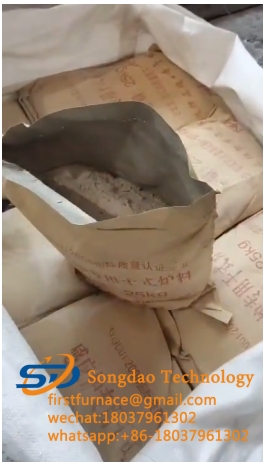- 10
- Oct
Effect of refractory charge for induction furnace
Effect of refractory charge for induction furnace
Everyone knows that refractory furnace charges are widely used in metallurgy, building materials, non-ferrous metal smelting, chemical, machinery and other manufacturing industries. Refractory charge refers to the unshaped refractory that is constructed by masonry (manual or mechanical) and hardened under the heating effect of higher than normal temperature. It is made by mixing refractory aggregates, powders, binders, admixtures, water or other liquids with a certain gradation. According to the classification of raw materials, there are high alumina, clay, magnesia, dolomite, zirconium and silicon carbide-carbon refractory refractory materials. Today I will talk about the effect of refractory charge.
According to different blast furnace types and different data planning requirements, the carbon refractory charge is mainly used for the gap between the bottom carbon brick and the bottom sealing plate, the hearth carbon brick and the cooling stave, and the bottom water cooling pipeline. For the filling of the above leveling and gentle cooling walls, all parts require the carbon refractory charge after the refractory charge to have a certain strength and density, fill every corner and small gaps, and meet the requirements of no leakage of molten iron and gas, and The thermal conductivity of the carbon refractory charge must be basically consistent with the performance of the hot carbon bricks and cooling staves of the blast furnace, so as not to affect the life of the blast furnace, and then maintain the normal production of the blast furnace.
The problem often encountered in the application of carbon refractory charge is that the thermal conductivity of general carbon refractory charge is low, which is not conducive to the rapid cooling of the blast furnace body, and then affects the service life. Therefore, the renewal research and application of high thermal coefficient carbon refractory charge have market prospects. Regardless of whether it is adding additives to carbon masonry, changing the performance of data through in-situ reaction at high temperature, or changing the local data application structure from the planning point of view, it can make the carbon refractory furnace charge layer when the working temperature rises. Reach the thermal conductivity matching the carbon brick and the cooling stave to ensure the normal heat conduction without damaging the overall construction structure, and then reach the requirement of improving the life of the blast furnace.

